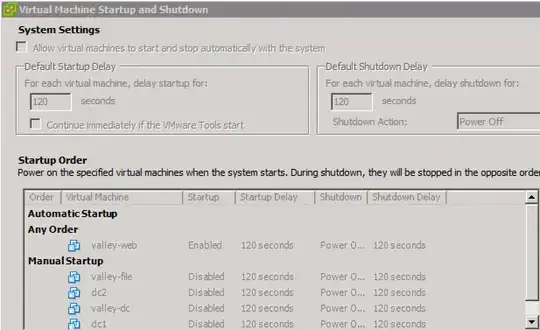Suppose you have a fully virtualized VMware infrastructure: ESXi, vCenter, vMotion, HA, DRS, the whole package.
Inside, you have lots of VMs, which at any given time may reside on one host or another (that's the whole point of clustering, isn't it?).
You experience a power loss, and, one way or another, you manage to shut down gracefully all VMs and all hosts; let's not delve into this for now, let's just assume your UPS software can handle it. Or, at least, let's assume the shutdown was not so graceful, but everything is still able to come up again once power is restored.
Power comes back, and your hosts restart.
Your environment is quite complex, and it has natural dependencies between VMs: domain controllers should start first, an application server can't start unless its back-end DB server is already up and running, and so on.
We all know (or should hopefully know) how to configure automatic VM startup and how to specificy a VM startup order and delay on a single ESX/i host.
But how to do this across a whole datacenter?
Is there any way to tell vSphere "start these VMs in this global order, regardless of the physical host they are running on"?
Bonus points: if vCenter itself is running on a virtual machine, how does this change things?
